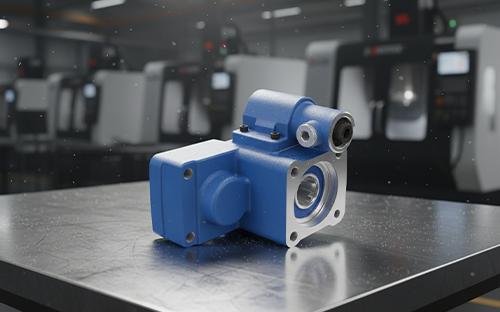
Power Take Off, commonly referred to as PTO, is a mechanical power transfer system used in heavy-duty vehicles, trucks, tractors, industrial machinery, trailers, and construction equipment. A PTO allows the engine's power to be redirected to auxiliary equipment such as hydraulic pumps, tipping systems, compressors, sweepers, winches, or water pumps — enabling the vehicle to perform additional functions beyond movement.
Power Take Off (PTO) is a mechanical output connection mounted on the transmission or engine, designed to transfer rotational power to external systems. In many industries, PTO is also known as an auxiliary gearbox. The purpose of a PTO is to convert engine-generated motion into usable power for machinery or hydraulic systems, making the vehicle more versatile and functional.
A PTO works by connecting directly to the vehicle’s transmission system. When activated, the PTO engages gears that transfer the engine’s rotational force to a hydraulic pump or similar external device.
This mechanism allows:
Redirection of engine power to auxiliary equipment
Controlled and stable power output
Continuous operation without the need for an additional engine
With PTO engagement, the vehicle can lift loads, pump fluids, operate hydraulic arms, or drive rotating mechanical systems with efficiency and stability.
PTO systems are widely used across multiple industries and applications, including:
Tipper trucks and trailer lifting systems
Tractors and agricultural equipment
Cranes and recovery vehicles
Fire trucks and water pumping systems
Road sweeping and municipal cleaning vehicles
Industrial compressors and hydraulic press systems
In any machinery where external power is required from the main engine, a Power Take Off system is essential.
Different industries use various types of PTO designs depending on operating needs and required torque levels:
Mechanical PTO
Pneumatic PTO
Hydraulic PTO
Each type has its advantages depending on the level of control, automation, and power output needed.
PTO pricing varies depending on several factors such as:
Vehicle brand and transmission compatibility
Type of PTO system
Torque and power capacity
Manufacturing quality and certification standards
Local or imported production
High-quality PTO systems typically provide longer service life, reduce maintenance costs, and ensure reliable operational performance.
Choosing the correct PTO system is critical. Before purchasing, the following factors should be evaluated:
Compatibility with the vehicle transmission
Required torque and horsepower
Application type (tipping system, hydraulic pump, crane, compressor, etc.)
Availability of spare parts and technical support
Warranty and durability expectations
Selecting the wrong PTO can lead to poor performance, overheating, power loss, and costly mechanical failures.